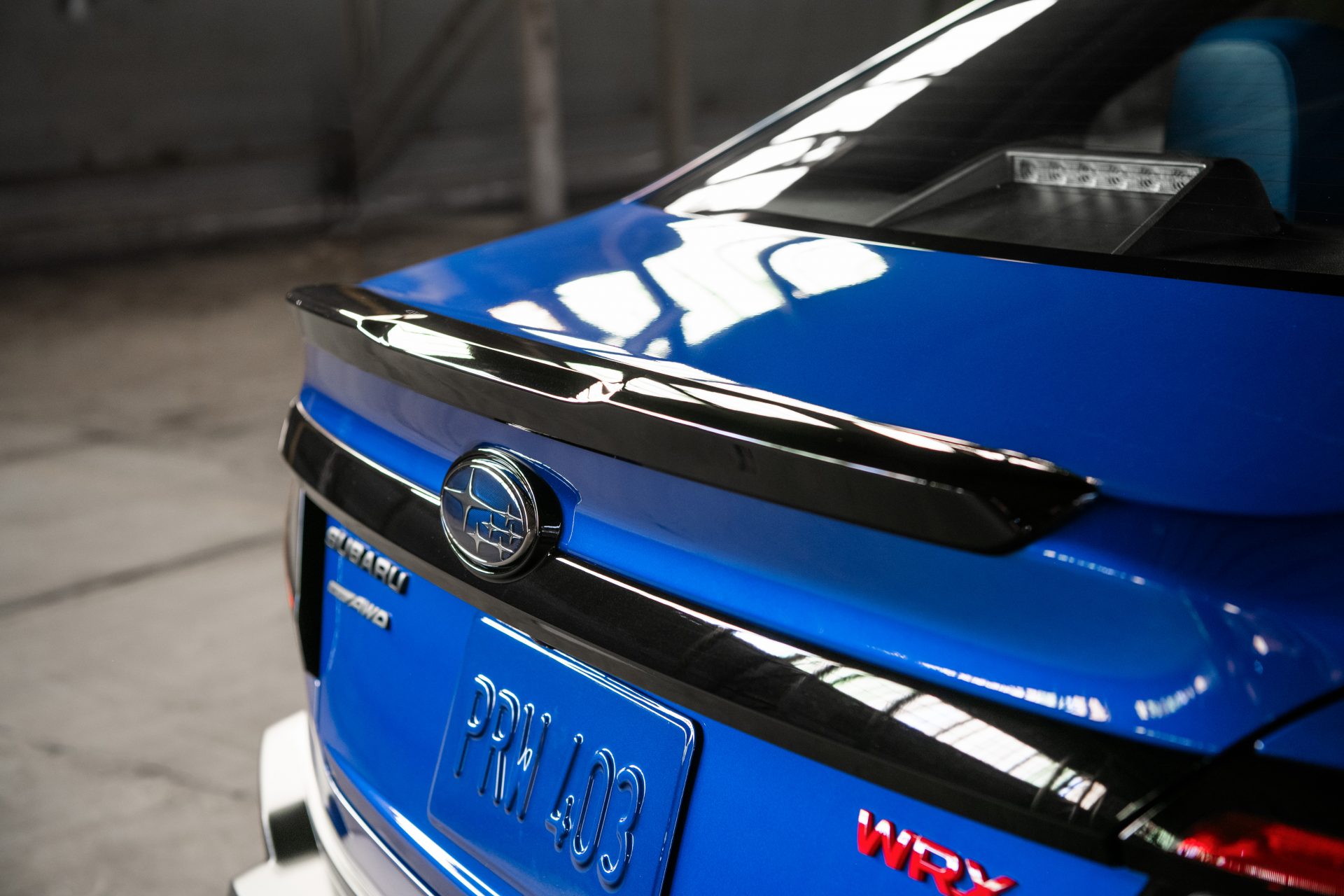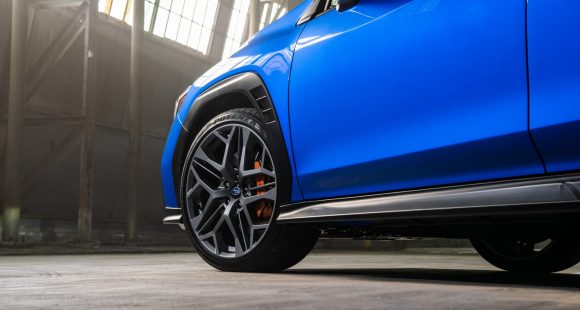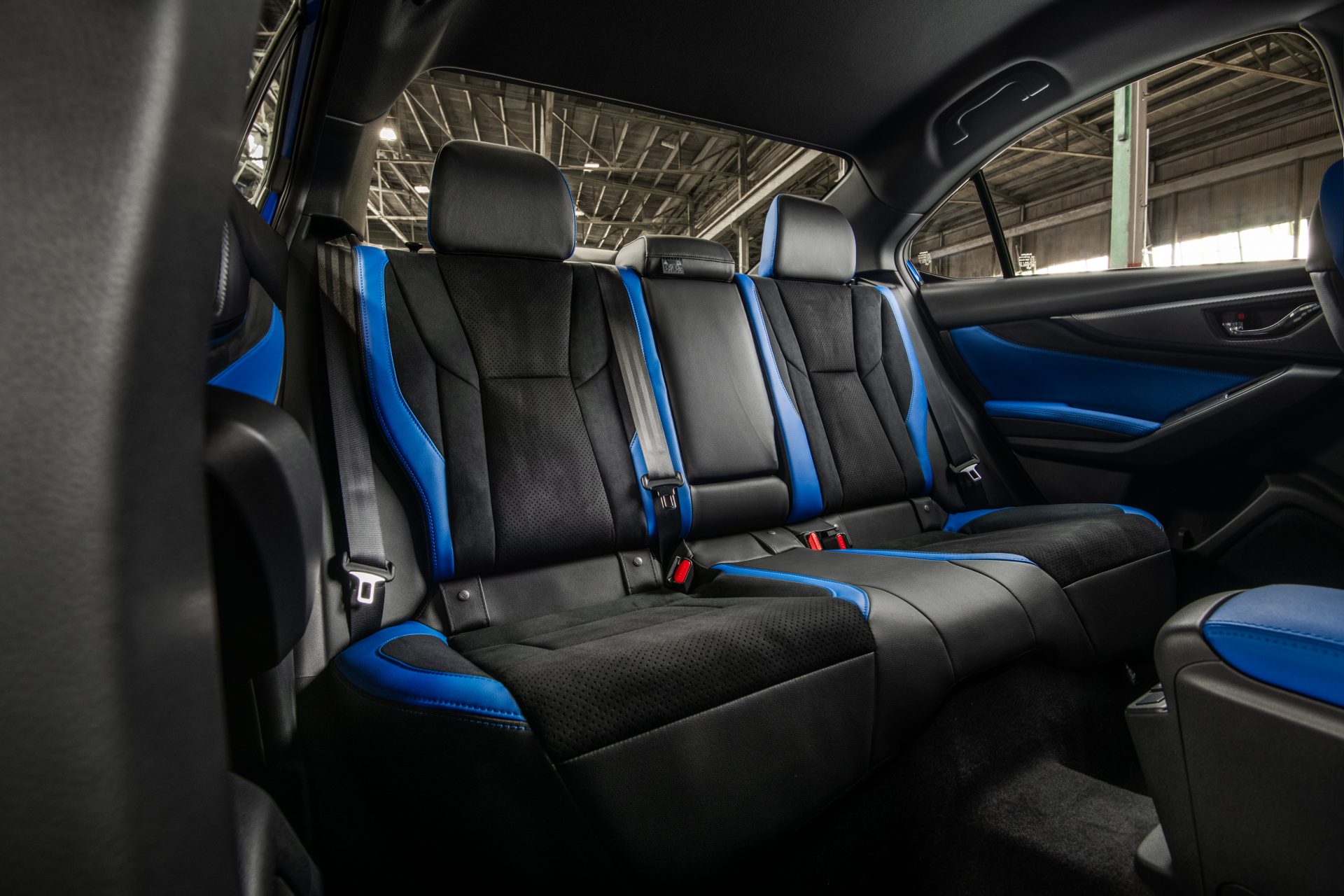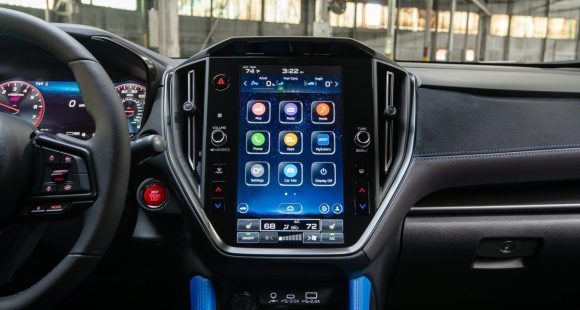2014 Toyota Tundra
When the Tundra replaced the T100 in the Toyota lineup for 2000, it was proof that Toyota was serious about taking on the domestics in the full-size pickup truck market. And while sales have never really challenged F150 or Silverado, the Tundra has carved quite a niche for itself among personal use buyers. Now let’s see if a new manly makeover will help them carve out even more sales.
It’s hard to ignore the 2014 Toyota Tundra’s changed face. It’s larger and more in your face, and in tune with the more rugged appearance that graces the rest of the truck. And that more macho design was by design.
Despite being just as capable as domestic light-duty pickups, the Tundra has thus far been unable to shed its soft image. Well, as truck current marketing-think goes; the bigger the grille, the more capable the truck! So the new Tundra’s cow catcher grows in size, yet still blends in nicely with a new 3-piece front bumper.
 The stance is certainly wider, and fenders are a little more squared off, all helping to reaffirm this Tundra’s credentials, as does towing up to 10,400-pounds. The rear end is “branded” with Tundra script; an integrated tailgate spoiler, and a 3-piece bumper of its own, while aero tricks on the rear tail light lenses and side mirrors help this brutish brick get through the air as efficiently as possible.
The stance is certainly wider, and fenders are a little more squared off, all helping to reaffirm this Tundra’s credentials, as does towing up to 10,400-pounds. The rear end is “branded” with Tundra script; an integrated tailgate spoiler, and a 3-piece bumper of its own, while aero tricks on the rear tail light lenses and side mirrors help this brutish brick get through the air as efficiently as possible.
To keep pace with the high dollar pickups now in vogue, Toyota adds a new 1794 model that pegs the bling-o-meter with 20-inch alloy wheels and a power moon roof. 3-Cabs are available; the 2-door Regular cab and a pair of 4-doors – the extended Double cab, and the CrewMax crew cab with a standard power sliding back window. All Tundras add Halogen reflector beam headlights with manual level control; and the 1794 edition adds LED daytime running lights.
We are disappointed to see no major powertrains changes, however. It’s not that they’re inadequate. But, domestic full-size pickups, along with Nissan’s Titan, are making some serious strides in mixing more power with more fuel economy and Toyota is at risk of getting left behind.
As before, a 4.0-liter V6 is the base engine, and a pair of V8’s are available. We spent most of our time in the volume leading 5.7-liter V8 rated at 381-horsepower, and 401 lb-ft. of torque. While it pulls strongly and has a very responsive throttle, compared to domestic V8’s it tends to sound like it’s working much too hard.
It’s paired with a 6-speed automatic transmission with tow/haul mode, and gets Government Fuel Economy Ratings of 13-City, 17-Highway, and 15-Combined for our 4-wheel-drive tester. That makes for a very poor Energy Impact Score thanks to 22.0-barrels of annual oil consumption and yearly CO2 emissions of 10.0-tons.
 While the exterior has undeniably taken the macho route, the interior has actually gotten even friendlier. Materials vary greatly with trim level, but our CrewMax Limited had very comfortable leather clad seats and wood-style trim. Also, Tundra is the only truck with available blind-spot monitoring and rear cross traffic alert. CrewMax models offer plenty of room in the rear seats as well, whether left in place for seating, or folded up out of the way for cargo. Switchgear is nice and big, with a fairly logical layout; and major controls are closer to the driver than before for ease of use.
While the exterior has undeniably taken the macho route, the interior has actually gotten even friendlier. Materials vary greatly with trim level, but our CrewMax Limited had very comfortable leather clad seats and wood-style trim. Also, Tundra is the only truck with available blind-spot monitoring and rear cross traffic alert. CrewMax models offer plenty of room in the rear seats as well, whether left in place for seating, or folded up out of the way for cargo. Switchgear is nice and big, with a fairly logical layout; and major controls are closer to the driver than before for ease of use.
One complaint; like most rivals the Tundra’s navigation screen is hard to read in direct sunlight. The Tundra’s frame also carries over from last year, but the suspension has been revised and an improvement is quickly noticed. Ride quality is smoother and you really feel like you’re riding high and breathing thin air. Steering remains hydraulic, providing good overall feel, with better straight line stability.
 During our limited off pavement time we found the Tundra to be plenty capable of handling the less traveled way to your favorite camp site or hunting spot; and engaging 4-wheel-drive on the fly was quick and smooth. An automatic limited-slip differential is standard.
During our limited off pavement time we found the Tundra to be plenty capable of handling the less traveled way to your favorite camp site or hunting spot; and engaging 4-wheel-drive on the fly was quick and smooth. An automatic limited-slip differential is standard.
And when it comes to pricing, starting at just $26,915 the Toyota Tundra is a lot of truck for the money. The 2014 Toyota Tundra has improved greatly and without a doubt has proved itself to be a viable alternative to the Big-3. Still, in this full-size arena, the domestics do it better. However, while Ford, Chevrolet, and RAM may not be worried at the moment; the Tundra is here to stay, and it’s getting better all the time.
Specifications
- Engine: 5.7-liter V8
- Horsepower: 381
- Torque: 401 lb-ft.
- EPA: 13 mpg city/ 17 mpg highway
- Energy Impact: 22.0 barrels of oil/yr
- CO2 Emissions: 10.0 tons/yr
2025 Subaru WRX tS
Subaru’s “World Rally eXperimental” Gets Tecnica-Tuned Tech
Building on its global rally heritage, WRX has been a standalone Subaru nameplate, marketed separately from garden variety Impreza, for two generations now. And while the current WRX still lacks the full STI treatment, this WRX tS serves up some of that high-performance spice we’ve been longing for.
Before we go flat out into our Track Test of this 2025 Subaru WRX tS, lets open the Subaru dictionary so we’re all on the same page. “tS” stands for “tuned by STI;” and “STI” is an acronym for “Subaru Tecnica International,” the brand’s high-performance sub-group best known for upgrading the WRX— oh, that stands for “World Rally eXperimental,” in case you didn’t know.
All that said, STI has been largely dormant for this WRX generation, but this tS sprinkles more of their engineering magic into the mix. No, that doesn’t mean extra power, but does mean significant chassis-related improvements.
First, electronically controlled dampers, adjustable through the 11.6-inch tablet-style infotainment screen. That meant a softer “comfort” mode on the 10+ hour commute to and from Savannah’s Roebling Road Raceway. But once we were there, it was the firmer “Sport+” setting all the way, heightening response from the WRX’s throttle and already quick dual-pinion power steering system. There’s still some body roll for rally-esque weight transfer, but it’s well sorted and provides the “toss-ability” you want in a WRX.
Though if you do autocross your tS, which we implore you to do, you might feel the six-piston front, two-piston rear Brembo brakes first. The bite is strong, giving good rotation in the corners and plenty of “halt” for this 3,400 lb. compact with minimal fade, keeping us on track all week…until some unfortunate winter weather passed overhead. No worries here, as Subaru’s Symmetrical All-Wheel-Drive system got us to the track for some powdered deserts: Frosted donuts served up Michelin style, a set of winter tires different from the grippy Bridgestone Potenza S007 rubber the tS typically rides on. Some prior hot laps of California’s Sonoma Raceway gave credence to those Bridgestones, and showed us what this hot-compact can do in ideal conditions.
It’s well sorted and provides the “toss-ability” you want in a WRX.
Other tS enhancements are cabin-based, namely these beautiful blue Recaros. Most of our staff appreciated their moderately-aggressive bolstering on both street and track. And they’re even heated, too. Another tS-only appointment is this 12.3-inch digital gauge display. It mimics the standard analog gauges with some additional info, but can switch to a navigation mode for more convenient route guidance.
We do wish our tS came in the new Galaxy Purple or the trademark World Rally Blue, but this Crystal White paint wasn’t too shabby, contrasting its Cherry Blossom Red badging and blacked-out lip spoiler. Otherwise, the tS is like any other WRX, down to the hood scoop funneling air to the top-mounted intercooler.
Underneath is the same turbocharged 2.4-liter flat-four in all other trims, boxing at 271 horsepower and 258 lb-ft of torque. The freak winter weather stopped straight-line testing, but a 0-60 time estimate of 5.5 seconds is about as spry as you realistically need, pulling strong through most of the tach; though the 6,000 RPM redline required attentive shifting of the six-speed box, which the tS comes exclusively with. The throws are precise, if a little long, and the clutch is wonderfully weighted.
With discontinuation of the Base trim, pricing for the WRX now starts with Premium at $36,920. The tS is at the top of the lineup with the automatic-only GT, both starting at $46,875. All WRXs continue to be made in Gunma, Japan.
If you’re an enthusiast itching to do the tuning yourself, perhaps the 2025 Subaru WRX tS is not for you. But if you want a plug-and-play experience, this is it. While it won’t exactly bestow the loose-cannon, top-level driving skills exhibited by famous WRC drivers upon you, the tS moves this WRX’s game in a direction we’ve so desperately wanted Subaru to take.
Specifications
As Tested
- Engine: 2.4-liter flat-four
- Tranmission: 6-speed manual
- Horsepower: 271
- Torque: 258 lb-ft











































